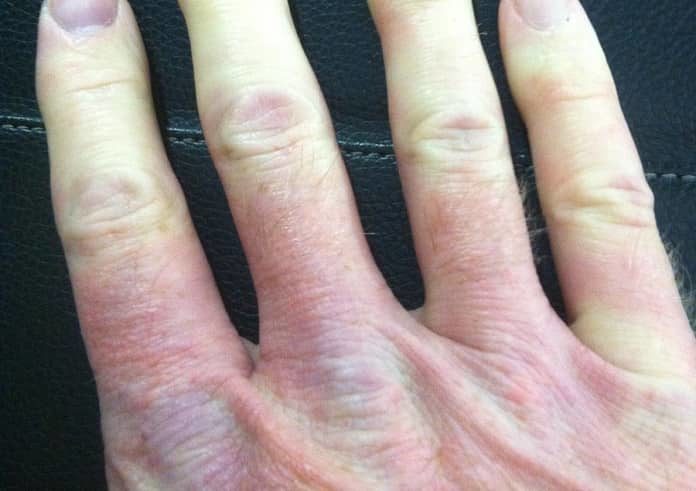A recent report from the Canadian Pharmacists Association highlights the current treatment strategies for Raynaud Phenomenon.
Raynaud Phenomenon is a medical condition that causes the blood vessels in the digits to constrict. This limits blood flow to these extremities and causes colour changes in the skin of the digits. Unfortunately, no consensus-based treatment guidelines are available for treating Raynaud Phenomenon and management of the disease relies on available evidence and clinician experience. A recent report from the Canadian Pharmacists Association has highlighted the frequent symptoms and current treatment strategies available.
Raynaud Phenomenon occurs in response to cold temperatures or emotional stress. The first phase of the phenomenon causes a white attack, where the skin of the digits turns white. This is followed by a blue attack. This blue colour of the skin indicates that the tissues of the fingers or toes are not receiving enough oxygen. Patients will experience tingling, numbness, and pain in the affected extremities. Once blood flow has returned to the digits, the skin blushes and turns red.
Two forms of Raynaud Phenomenon exist. Primary Raynaud phenomenon refers to a condition where the patient has no preexisting illnesses or trauma that could explain the symptoms. Secondary Raynaud phenomenon can be associated with autoimmune diseases such as scleroderma, lupus, or connective tissue diseases. Certain drugs may also be responsible for Raynaud phenomenon.
Managing Raynaud Phenomenon
For managing Raynaud Phenomenon, the primary objective is to decrease the severity and frequency of attacks. This can be achieved with nonpharmacologic methods. Minimizing cold exposure in patients who react to cold temperatures is an obvious solution. Patients must master warming techniques to increase blood flow to the digits and prevent an attack by dressing warmly. If possible, patients such also avoid using drugs that reduce blood flow (such as ergot derivatives and beta blockers).
Unfortunately, no treatment guidelines are available; however, certain drugs can provide some benefit. Nifedipine, a calcium channel blocker used in treating high blood pressure, can help to reduce the frequency of attacks in cold temperatures. Other blood-pressure-regulating medications have not shown effectiveness in treating Raynaud Phenomenon. A two percent nitroglycerin ointment can be used topically to aid in establishing blood flow. There are several limitations to this treatment. It must be compounded in pharmacy since it is not commercially available. In addition, although the treatment is topical, the side effects include a headache and low blood pressure.
Not All Patients Benefit from Drug Therapy
Patients suffering from Raynaud Phenomenon must understand the importance of the nonpharmacologic methods for managing their condition since not all patients will benefit from drug therapy. Drug therapy usually aids in reducing the frequency of attacks while the nonpharmacologic methods prevent and reduce the intensity of an attack. It is reassuring to know that no complications usually arise from primary Raynaud Phenomenon.
Written by Jessica Caporuscio, PharmD
References:
Roussin, A. Raynaud Phenomenon. Canadian Pharmacists Association RXTX. 2017.
Wigley, F. Clinical manifestations and diagnosis of the Raynaud phenomenon. Up To Date. 2017.



